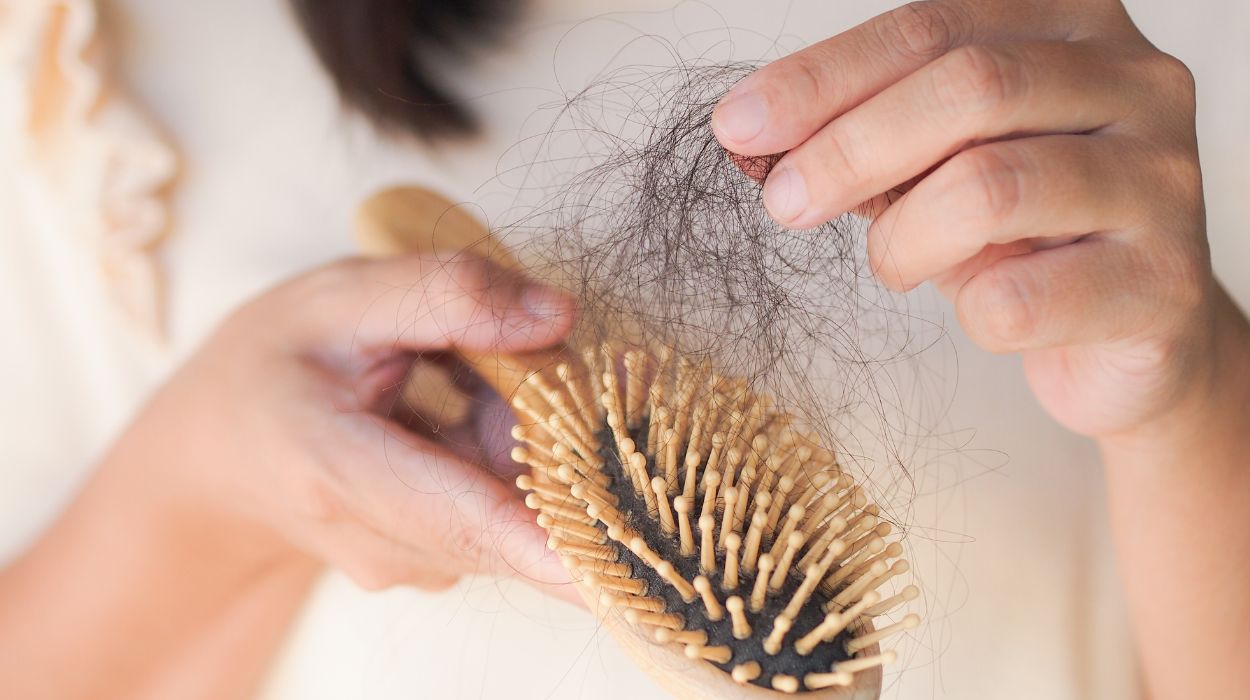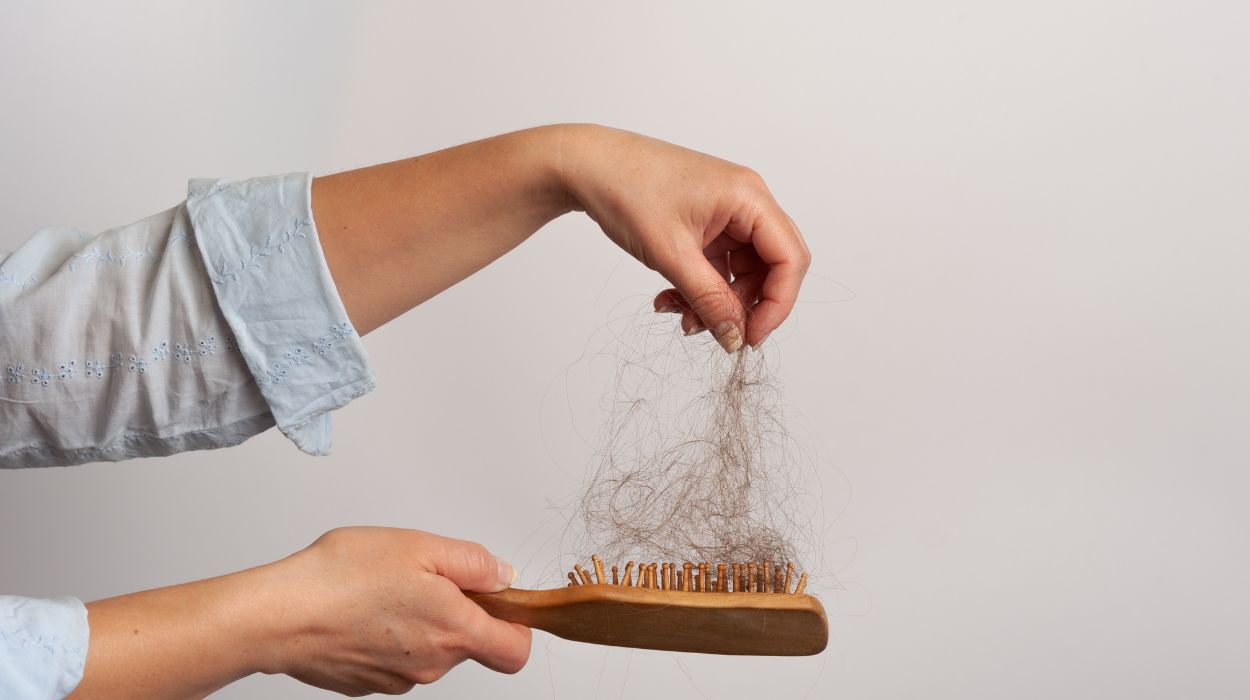Hair loss is a common concern that affects people of all ages, genders, and ethnicities. An average person is estimated to lose between 50 to 100 hairs per day. However, there is no set number of hairs that are considered normal to shed, as it can vary from person to person. Factors such as hair type, age, and underlying medical conditions can influence the amount of hair loss. In this article, we will explore the topic of hair loss in depth and provide tips to help stop it. We will cover the various phases of the hair growth cycle, different types of hair loss, and common causes of excessive hair shedding. Additionally, we will discuss the use of visual scales to assess hair loss and share some effective ways to promote healthy hair growth. By the end of this article, readers will better understand how much hair loss is normal and what steps they can take to prevent excessive hair shedding.
How Much Hair Loss Is Normal
Hair shedding is a natural part of the hair growth cycle, and it is considered normal for healthy people to lose between 50 to 100 hair strands daily. This amount of hair loss is referred to as normal shedding and is considered part of the body’s natural cycle of hair growth and replacement. The hair growth cycle has three main phases, including the anagen phase (growth phase), the catagen phase (transition phase), and the telogen phase (resting phase), during which hair strands are shed. It is important to note that hair loss can be influenced by various factors, such as age, gender, genetics, and underlying medical conditions. In some cases, excessive hair shedding may be a sign of an underlying health issue or a result of certain life events such as pregnancy or major surgery. To determine if the amount of hair loss is normal, a visual scale can be used to assess the amount of hair shedding. If the amount of hair loss is considered excessive, various tips and treatments are available to promote healthy hair growth and prevent further hair loss.
Average Hair Fall Every Day

On average, it is normal for a person to lose between 50 to 100 hair strands per day, which is considered a normal amount of hair fall. This daily hair fall is a part of the natural hair growth cycle and occurs as old hair sheds to make way for new hair growth. However, the amount of hair loss may vary depending on individual hair type, age, genetics, and underlying medical conditions. Excessive hair loss, which is beyond the normal range, maybe a cause for concern and may require medical attention. Therefore, it is important to keep track of the amount of hair fall and consult a healthcare professional if it exceeds the normal range.
Factors Affecting Hair Loss
Here are some factors that can contribute to hair loss:
- Age: As we age, our hair follicles shrink and become less active, which can lead to thinning and hair loss.
- Genetics: Hereditary factors play a significant role in determining the pattern and extent of hair loss, with male and female pattern baldness being the most common forms.
- Hormonal changes: Hormonal imbalances due to pregnancy, menopause, thyroid disorders, and other conditions can cause hair loss.
- Medical conditions: Certain medical conditions, such as alopecia areata, scalp infections, and autoimmune disorders, can lead to hair loss.
- Medications: Certain medications used to treat cancer, arthritis, depression, and other conditions can cause hair loss as a side effect.
- Nutritional deficiencies: Inadequate intake of vitamins and minerals, such as iron, biotin, and vitamin D, can affect hair growth and lead to hair loss.
- Stress: Psychological stress and trauma can trigger hair loss, as well as physical stress due to illness, surgery, or rapid weight loss.
- Hairstyles and treatments: Tight hairstyles, frequent heat styling, and chemical treatments such as coloring, straightening, and perms can damage hair follicles and lead to hair loss.
- Environmental factors: Exposure to pollution, toxins, and ultraviolet radiation can damage hair and lead to hair loss.
It’s important to note that hair loss can be a complex issue and may have multiple contributing factors. Consulting a healthcare professional can help identify the underlying cause of hair loss and determine the best course of treatment.
Life Cycle Of Hair Growth
The life cycle of hair growth is a complex and dynamic process that involves several stages and factors. Here are the different stages of the hair growth cycle:
- Anagen phase is the active growth phase of hair, during which the hair follicles produce new hair cells. The anagen phase can last for several years, and the length of this phase determines the maximum length of the hair.
- Catagen phase: This is a transitional phase, during which the hair follicles stop producing new hair cells, and the hair shafts detach from the follicles. The catagen phase typically lasts for a few weeks.
- Telogen phase is the resting phase, during which the hair follicles remain dormant, and the hair shafts are shed. The telogen phase lasts for several months and is followed by the next anagen phase.
- Hair follicle: The hair follicle is a small, specialized structure in the skin that produces and supports the hair shaft.
- Hair growth: The process of hair growth involves the production of new hair cells by the hair follicles and the gradual elongation of the hair shaft.
- Hair shedding: The shedding of hair occurs during the telogen phase when the hair shafts are detached from the hair follicles and fall out.
- Hair loss: Hair loss can occur due to various factors such as genetics, hormones, medical conditions, medications, and nutritional deficiencies.
- Hair breakage: Hair breakage can occur due to excessive heat styling, chemical treatments, and other factors that damage the hair shaft.
- Hair thinning: Hair thinning refers to a reduction in the diameter and density of the hair shafts, which can occur due to various factors such as aging, hormonal changes, and medical conditions.
Understanding the life cycle of hair growth can help individuals take better care of their hair and identify any issues that may be affecting their hair health. It’s crucial to maintain a healthy diet, avoid excessive heat styling and chemical treatments, and seek medical attention if experiencing hair loss or other hair-related issues.
Tips To Prevent Hair Loss

Here are some tips to prevent hair loss:
- Maintain a healthy diet: A balanced diet rich in nutrients like protein, iron, and vitamins (especially Vitamin D) can help promote healthy hair growth and prevent hair loss.
- Avoid tight hairstyles: Tight hairstyles such as braids, ponytails, and buns can pull and stress the hair follicles, leading to hair loss over time.
- Use gentle hair care products: Avoid harsh chemicals on your hair, such as bleach or dyes, as they can damage the hair and contribute to hair loss. Use mild shampoos and conditioners that are gentle on your scalp.
- Be careful with heat styling: Heat styling tools such as flat irons and curling irons can damage the hair and contribute to hair loss. If you must use heat styling tools, use them on a low setting and always use a heat protectant product.
- Manage stress levels: High-stress levels can lead to hair loss, so managing stress is vital for maintaining healthy hair. Exercise, meditation, and deep breathing can all help to reduce stress levels.
- Get enough sleep: Lack of sleep can lead to hair loss, so getting enough rest is crucial. Aim for 7-8 hours of sleep per night.
- Treat medical conditions: Certain medical conditions, such as thyroid problems, anemia, and autoimmune disorders, can contribute to hair loss. Treating these conditions can help to prevent hair loss.
- Avoid smoking: Smoking can damage the hair follicles and contribute to hair loss, so quitting smoking is an important step in preventing hair loss.
By following these tips, you can help to prevent hair loss and promote healthy hair growth.
Conclusion
In conclusion, hair loss is a common condition that affects many people due to various factors such as genetics, hormonal imbalances, stress, and nutritional deficiencies. Understanding the life cycle of hair growth and implementing healthy habits, such as eating a balanced diet, avoiding heat styling, and managing stress, can help prevent hair loss. It’s essential to address hair loss early on and seek professional help if needed to prevent permanent hair loss. Proper care and attention make it possible to maintain healthy hair and minimize the risk of hair loss.
Frequently Asked Questions
Hair loss can be caused by a variety of factors, including genetics, hormonal imbalances, stress, nutritional deficiencies, and underlying medical conditions.
The average person loses between 50-100 hairs per day, which is considered normal hair shedding.
Yes, hair loss can be prevented or minimized by implementing healthy habits such as eating a balanced diet, avoiding heat styling, and managing stress.
In some cases, hair loss can be permanent, particularly in conditions such as androgenetic alopecia or female pattern baldness.
Eating a balanced diet that includes foods rich in vitamins and minerals, such as biotin, zinc, and iron, can help promote healthy hair growth and minimize the risk of hair loss.
Yes, stress can cause hair loss, particularly in cases of telogen effluvium, where hair sheds during the resting phase of the hair growth cycle due to stress or trauma.
No, hair loss affects both men and women and can be caused by similar factors.
It’s essential to seek professional help for hair loss if it’s sudden or severe, accompanied by other symptoms, or if it’s causing significant distress or impacting your quality of life.
